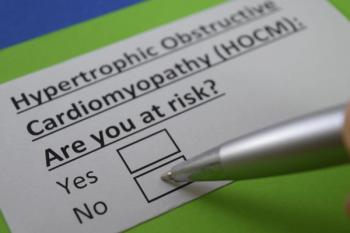
Calif. pharmacists prepare for new naloxone rules
Experts provided advice on the implementation of AB 1535, the California law that allows pharmacists to furnish naloxone in California without a prescription, during a recent webinar hosted by the California Pharmacists Association.
Experts provided advice on the implementation of AB 1535, the California law that allows pharmacists to furnish naloxone in California without a prescription, during a recent webinar hosted by the California Pharmacists Association.
The
A positive impact
In California, counties with naloxone programs had an overall slower rate in the growth in opioid overdose deaths compared with counties without naloxone programs, said Michelle Geier, PharmD, psychiatric and substance use disorders clinical pharmacist with the San Francisco Department of Public Health, and Phillip O. Coffin, MD, director of Substance Use Research at the San Francisco Department of Public Health, during the webinar.
In order to provide naloxone, pharmacists will need to complete a one-hour continuing education course, which is still being developed. In addition, the protocol for AB 1535 developed by the California Board of Pharmacy and the Medical Board of California is not yet in effect, so pharmacists are not providing naloxone without a prescription. “However, retail pharmacies do dispense take-home naloxone to patients with prescriptions from their providers or under collaborative practice agreements,” Geier said.
Pharmacists should consider offering naloxone scripts to all patients prescribed long-term opioids and anyone otherwise at risk of experiencing or witnessing an opioid overdose, Geier and Coffin said.
Patient counseling required
Meanwhile, the AB 1535 protocol says that patient counseling is required, so it cannot be waived. As part of patient screening, pharmacists should find out if the recipient has a history of opioid use, is in contact with anyone who uses or has a history of using opioids, and whether or not the patient has a known hypersentivity to naloxone.
Naloxone products are available as intramuscular injections, intranasal sprays, and autoinjectors. Pharmacists should choose the formulation based on availably, how well patients can administer it, and the setting. Both the naloxone autoinjector and naloxone used for intra-nasal can be purchased from a pharmacy wholesaler while the mucosal atomizing device (MAD) that is required to give a intra-nasal dose can be purchased through some pharmacy wholesaler medical supplies contracts or from a medical supplies company, according to Geier.
Also, see:
Newsletter
Pharmacy practice is always changing. Stay ahead of the curve with the Drug Topics newsletter and get the latest drug information, industry trends, and patient care tips.











































































































































































































